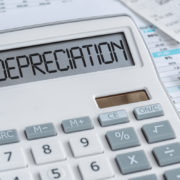End of Year Reminder: Time is Running Out to Take Your 2022 RMD
- What are RMDs?
- Learn about rules for RMDs in 2022.
- Learn about the mandatory distribution age.
- Find information about IRAs and qualified plans.
- Learn how to compute the RMD.
Required Minimum Distributions (RMD) are required taxable distributions from qualified retirement plans and are commonly associated with traditional IRAs. However, they also apply to 401(k)s and SEP IRAs.
The tax code does not allow taxpayers to keep funds in their qualified retirement plans indefinitely. Eventually, these assets must be distributed, and taxes must be paid on those distributions. If a retirement plan owner takes no distributions, or if the distributions are not large enough, then he or she may have to pay a 50% penalty on the required distribution amount that is not distributed.
The penalty can be waived where the failure to take the required distribution was due to reasonable cause and steps are being taken to remedy the shortfall. However, you must apply for a penalty waiver. This creates additional hassle, not to mention the potential additional tax created by multiple-year distributions in one year.
Note: RMDs do not apply to Roth IRAs while the account owner is alive.
When to take an RMD
Individuals with a Traditional IRA must begin taking RMDs in the year they reach age 72. You can delay the first year’s distribution for those turning 72 in 2022 to no later than April 3 of 2023. However, delaying the first distribution means taking two distributions in 2023, which could have adverse tax consequences. For a participant in a qualified retirement plan (think profit sharing plan or 401(k)) the RMD requirement begins April 1 of the year following the later of when you turn age 72, or the year you retire.
We determine RMDs for 2022 based on the values of the accounts as of December 31, 2021. Then, we divide that amount by the distribution period. The distribution period is based on the taxpayer’s life expectancy. We determine this from the Uniform Lifetime Table for the taxpayer’s current age.
If you have been calculating your RMD in the past, be aware that a new uniform lifetime table applies in 2022, as illustrated below.

Example:
Don’s oldest age in 2022 is 75. He has a single IRA account with a value of $150,000 at the close of the business day on December 31, 2021. Using the Uniform Lifetime Table effective for 2022, we find that the distribution period for age 75 is 24.6 years. Thus, Don’s RMD for 2022 is $6,098 ($150,000/24.6).
RMDs and IRAs
When an owner of a retirement plan or an IRA dies before receiving his or her entire RMD in the year of death, the unpaid amount must be distributed to the named beneficiaries or, if none, the decedent’s estate.
Where an individual has multiple retirement plans and/or IRAs, you may encounter some additional complications, such as which accounts withdrawals for the distributions must be withdrawn from. Note that you cannot use distributions from a 401(k) or another qualified retirement plan to satisfy the RMD of an IRA or vice versa.
If you need to make your 2022 RMD by December 31st and haven’t yet done so, keep in mind that the 31st is not a business day, and may be observed as the New Year’s holiday by many financial institutions. So, a word to the wise: don’t wait until New Year’s Eve to arrange for the distribution.
Need assistance related to your RMD? Call Fiducial at 1-866-FIDUCIAL or make an appointment at one of our office locations to discuss your situation.
Ready to book an appointment now? Click here. Know someone who might need our services? We love referrals!









